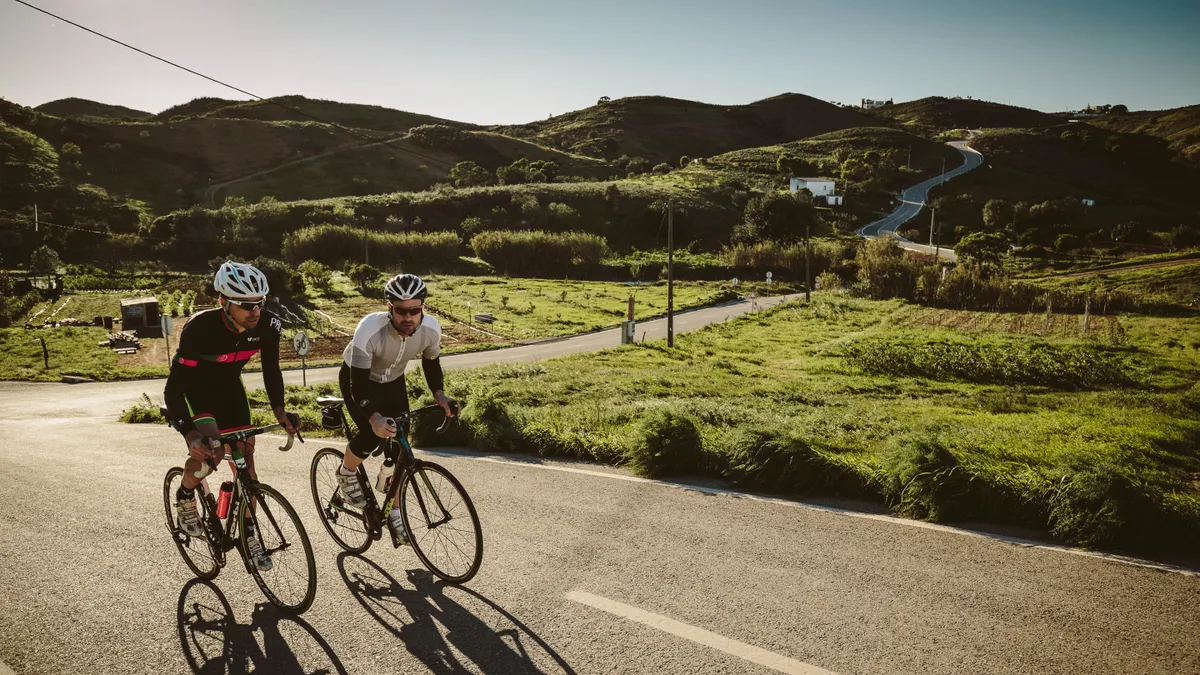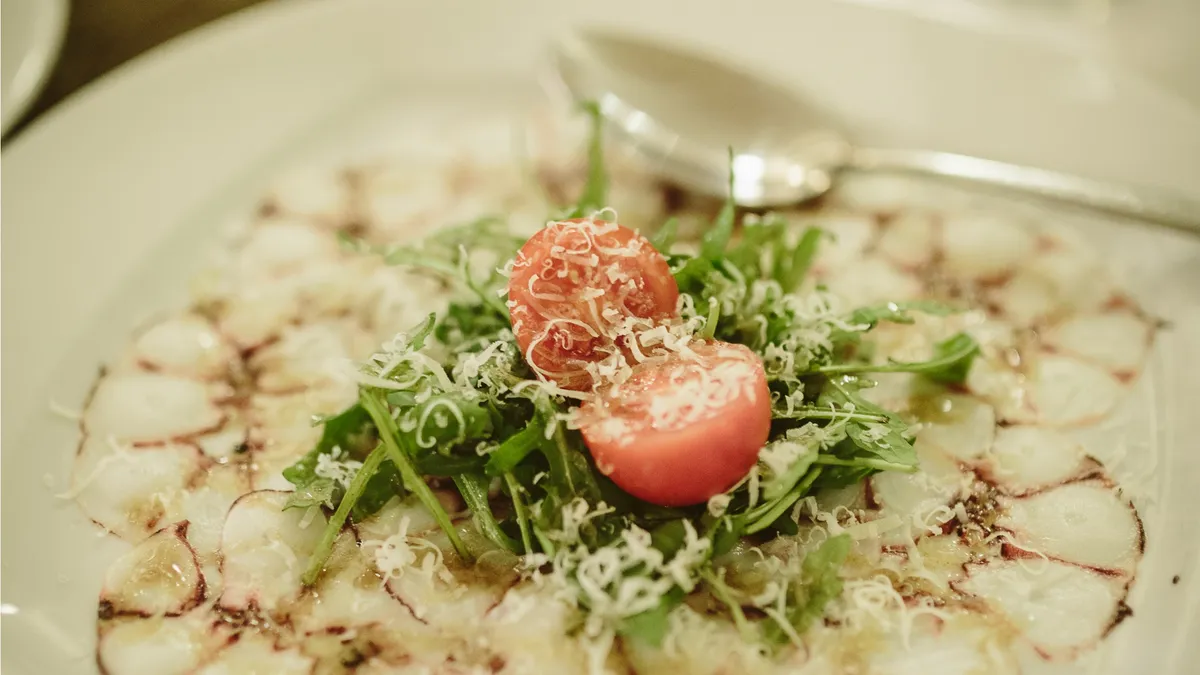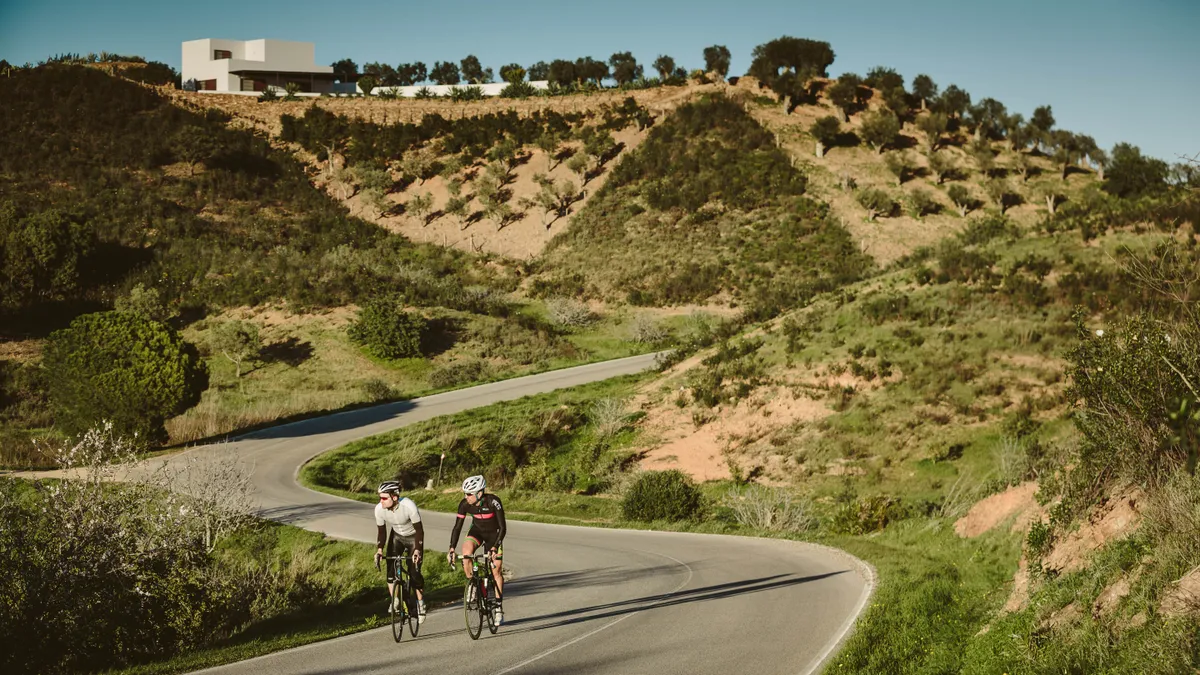Back when I was a keen young club rider, riding through the Northumbrian lanes in mid-January dressed up like a trawlerman to stave off the wind and rain, most of the two abreast chit-chat revolved around the impending club training camp. Usually, the destination was Majorca. Being a student and therefore penniless, I was an envious outsider. I never had the pleasure of joining the team for ascents and descents of Puig Major and Sa Calobra, followed by après ride beers and tapas.
- How to become a hill climbing star
- How to improve cycling endurance
- 11 of Europe's toughest road cycling climbs
All good things come to those who wait though. Fifteen years after watching my rain sodden club-mates get the fidgets thinking about those smooth, dry and novel Majorcan roads, my turn came. Even the weather of January 2016 had been good enough to remind me just how wet, dank and miserable England can be when it’s time to think about the upcoming training camp. Rather than the Balearics, my destination was the verdant hemline of southern Portugal that juts into the Atlantic, the Algarve – land of golf courses, beaches and high-rise hotels.
My guide for an afternoon riding in the Algarve was Luis Silva, a recently retired ex-professional who rode the Tour of the Algarve, an early season race for the likes of Team Sky’s Geraint Thomas and Tinkoff’s Alberto Contador. Luis is a local, making him a perfect choice to show me the network of roads in the Algarve interior.
- The course: An afternoon's riding on the best roads that the Algarve has to offer, including Roman cobbles, gracefully swooping hills and coastal roads
- The horse: KTM Revelator with Shimano Ultegra groupset, DT Swiss R24 Spline wheels, 25mm tyres
- The equipment goal: A bike that can handle cobbles, climb well and descend capably enough to dodge roadkill at speed
The bike I rode

From one of the local bike shops, Luis sorted me out with a KTM Revelator fitted with a Shimano Ultegra groupset and DT Swiss R24 Spline wheels with 25mm tyres. It was standard bike rental fare really: reliable but hardly striking.
It had been serviced recently and so ran perfectly smoothly. The cassette ratio was far too wide for my tastes and made for annoying changes, particularly on climbs. I did wonder how good it would feel to ride a super bike on such great roads, but then the next swooping corner came and it felt great.
The rest of my outfit was all tried and tested personal gear that I’ve had for years: a Mavic Altium short sleeve jersey paired with my trusty 10-year old Castelli arm-warmers (still going strong); Craft Elite Attack bib-shorts with Santini knee-warmers. My shoes were Giro Factors circa 2012 — they’re light, taut and still stylish.
Hidden gem

Point of departure for our ride was the town of Tavira, 40 minutes east of Faro, which happened to be Luis' stomping ground. Given the Algarve’s deserved reputation for enormous all-inclusive hotels, Tavira was a pleasant surprise; a low-rise gem of a whitewashed old town, with bell towers poking through the terracotta tiles.
“There are 28 churches here,” Luis said proudly, as we prepped our bikes. It was clear from the off he knew pretty much everyone who was local, delivering greetings left and right. Outside the old fortress he stopped to chat with a friend who was halfway up the side of one of the churches, painting it, on cartoon scaffolding that looked like it had been produced by Acme for Wile E. Coyote.
Luis was keen to show off all of the sights of Tavira as we wouldn’t pass this way again — the pretty old bridge over the river Gilao estuary; the sumptuous artwork in the churches that we were welcomed into despite clattering in in our cleats and the narrow cobbled streets and arches that connected everything together. Pretty in the pictures the streets may be but at the time riding – or rather skating – on those shiny, angular cobbles the Portuguese call calçada, they occupied our full and undivided attention.

Time was moving on. Luis put us on the road along the Rio Gilão, which took us out of town. After years of driving along Spanish costas where the coastline is an urban strip serviced by a thundering motorway and busy arterial roads, I was intrigued to know how we would move from town to country. Traffic stress, here we come I thought, imagining vans laden with oranges swerving around us.
For riders in search of longer climbs, head about an hour northwest of Faro to the folded terrain around Monchique
But before I had idly augmented the image with said citrus fruit bouncing out the back of the vans, we passed under a huge viaduct with the traffic on the A22 motorway passing quickly and benignly overhead. Immediately we were in quiet country. If it hadn’t been for the breeze rustling through the waxy leaves of the sprawling orange groves, it would have been silent.
We crossed a concrete bridge over an idle creek and were greeted with more calçada paving setts — but these were a distant relation to those in town, being much more rounded and far easier to negotiate. And they were a pleasing feature, especially early in the ride. There’s something about riding cobbles that seems to increase the sense of speed. Perhaps it’s the clattering chain and the vague loss of tyre contact that adds to the excitement. These were old Roman roads, Luis said, and there are sections throughout the region.
Soon we were in the hills. The roads rose and fell like swan necks; smooth, graceful pitches that started shallow but could rise to a stiff 12-14 percent at a moment’s notice before rounding off pleasingly. The average length of incline was a kilometre or so but there are a lot of them.
For riders in search of longer climbs, head about an hour northwest of Faro to the folded terrain around Monchique, which sits at the foot of the local daddy, the 10km climb up the Alto da Foia, which at 900m is the highest peak in the region. The guides at the Algarve Tourism board have created lots of maps for rides throughout the area that can be downloaded to computers, so you can take in as many or as few of them as you’d like.
A high score on the Ideal Riding Index

Our Tavira excursion was idyllic riding. Being from Northumberland, I know all about idyllic riding. I even have my own index. Traffic must be low, the terrain should be varied, the tarmac should be smooth and precipitation rare. Northumberland starts strongly but falters on road quality and collapses completely by the time we talk rain. Working backwards, the Algarve has the last one taped — 25mm of rain in February, according to one website that specialises in these things — and stays that way through the other criteria.
Away from the coast, motorised traffic becomes a rare, almost startling phenomenon. “Look, a car,” I say at one point, like an idiot. In these hills, when the breeze died, a whining engine could be heard miles away. But most of the time it was wonderfully peaceful. Certainly Luis and I had fallen mostly silent by that point, having given up on awkward conversation in favour of comfortable silence. That allowed me space to marvel at the tarmac, which sang under our tyres.
A good cycling road flatters the cyclist into thinking they are a better rider than they are. Here, the roads are an ego-stoking marvel. If Luis told me the asphalt had been mixed with ambrosia to achieve such heavenly smoothness, I’d have believed him. We would probably have been skittering about like Bambi had there been a drop of moisture, but well, see the point about rainfall above.

It had been a long time since I’d had so much fun scything down twisty descents and carrying enough speed to sling me a third of the way up the next rise. (It’s worth pointing out that I spent five days in the Algarve following a bike race and most of the inland roads were of similar quality and tranquillity — Luis hadn’t just taken me to the good bits.)
The only thing that wiped away the smiles was the wildlife. Freshly flattened and very obviously slippery toads defiled the surface every now and again. You’d round a bend and be confronted with a greasy splodge. Besides the splattered amphibians, there was farm livestock to be wary of too. Usually it was a goat, which, obviously never having seen either a car or bike in its life tended to stand on the road munching clover until the screech of brakes sent it lolloping into the verge.
We were nearing the furthest point of the ride, somewhere in the hinterland behind Tavira. Time was getting on and the late evening sun was losing warmth. Already in the lengthening shadows it was too chilly for comfort if we stopped for long to oblige our photographer Jesse, who couldn’t go 2km without pulling over for a potential shot. Progress was slow as we gasped at the views.
Picture-perfect landscape

The perfect cycling landscape photograph demands that in the background there be at least two, preferably more, ranges of hills or mountains in pleasing shades of blue blending into one another; it lends the photo space and makes a promise that there are many more roads to explore should you have the luxury of time to stay on.
So I was agog when we crested a hill and saw what could be described as a land of a thousand hills. Before us was the spread of the Algarve interior basking in sunlight and shadow. Turning 180 degrees and looking south, at the end of the straight, gently declining road that dropped away completely over a hill, was our whitewashed point of origin and beyond it, the deep blue Atlantic.
Geography’s attractiveness is no match for hunger, so we made the most of the descents all the way back to the coast. It wouldn’t be long before we were refuelling on seafood. Destination: Santa Luzia — another pretty whitewashed village south west of Tavira where fishermen specialise in catching octopus and the chefs focus on making them delicious.

Nearing the coast, the traffic became heavier and we left the creamy tar behind for something altogether more dog-eared. That probably had something to do with the directness of the route necessitated by the speed of the setting sun. It dipped below the horizon just as we hit the seafront. Before the sunlight left entirely we were treated to a sunset so spectacular that had Monet witnessed it, he would have scrambled for his palette and easel and created a masterpiece. I took a snap on my phone and it’s still my desktop background.
Unfortunately, good things come to an end. Sadly my training camp lasted one all-too-short afternoon in the company of a local operating on his stomping ground. I saw the best bits. However, I was in the Algarve for the rest of the week, based west of Faro, among the hotels and beaches that have shaped the reputation the area now carries. But the object of the trip — the professional Tour of the Algarve — proved time and again that the easily accessible interior of the region offers quiet, pristine roads over the type of terrain that challenges the legs and nourishes the soul.
During the course of the week, a few knots of British riders — unmistakable in their club jerseys — paused their own efforts to watch the race. Most of them carried the blush of too much sun too soon after a winter spent beneath neoprene and Roubaix fabric, but they also had the boisterous air of those who knew they’d found something a little bit special.
Local knowledge
Getting there
Faro is the regional hub airport and there are numerous low cost flights from all over the UK. The best time of year for the riding is February–April, when the roads are at their emptiest and the temperature is in the late teens and early 20s. Hire a car: the A22 motorway (a toll) runs right along the coast and a 30-minute drive in most directions will give you the freedom to explore.
Where to stay
We stayed west of Faro, near Albufeira in the Grande Real Santa Eulália Resort & Hotel Spa. It was off-peak, so the hotel was practically empty. There are a dizzying number of hotels to choose from suiting a range of budgets, so shop around and check they’re okay with taking bikes to the rooms.
Where to eat

Luis showed us into the Restaurante 'Polvo & Companhia' on the Santa Luzia seafront. Don’t be put off by the tacky menu board out front and the TV inside (all Portuguese restaurants have a TV on). The chef sent us a selection of octopus dishes that were all top notch. Don’t forego dessert, have a big slice of the local speciality, carob, fig and almond tart, it’s the finest recovery food known to man.
Local rides
Search ‘bike map cyclingportugal-algarve’ for more than 50 GPX files for rides in the area. If you’re looking for key climbs to test yourself against the pros, the Algarve has a couple. The Alto da Foia made a return to the region’s top race, the Tour of the Algarve, in 2016 after a 14-year absence. It’s 7.5km from the town of Monchique to the telecoms array at the summit and is a relatively mild six percent, but beware of the wind.
It’s usually head-on for the first 4km, before becoming a cross-tailwind for the final section. The race’s signature climb, Alto da Malhao, is shorter and sharper — 2km with some sections in the high teens. French rider Thibaut Pinot currently holds the Strava KOM for both climbs.
Time your visit to watch the race on the Malhao; the climb always hosts a raucous party on race day with spectators coming from miles around, setting up barbecues and picnics, and the beer flows freely all afternoon. Think the Mur de Huy at Fleche Wallonne but with better weather.
